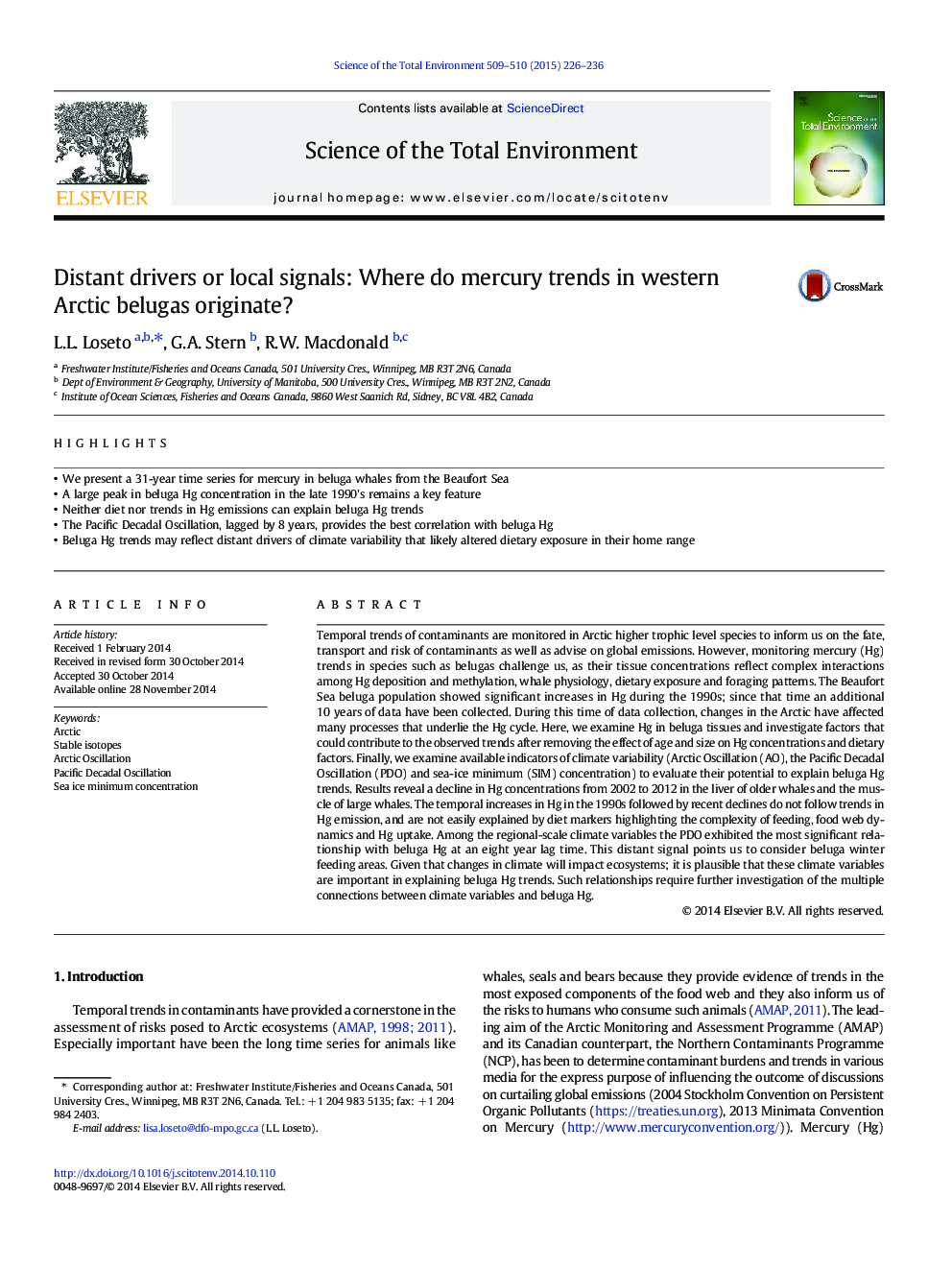| کد مقاله | کد نشریه | سال انتشار | مقاله انگلیسی | نسخه تمام متن |
|---|---|---|---|---|
| 6327388 | 1619767 | 2015 | 11 صفحه PDF | دانلود رایگان |
عنوان انگلیسی مقاله ISI
Distant drivers or local signals: Where do mercury trends in western Arctic belugas originate?
ترجمه فارسی عنوان
راننده های دور یا سیگنال های محلی: کجا روند جیوه در غرب قطب شمال بلغا ایجاد می شود؟
دانلود مقاله + سفارش ترجمه
دانلود مقاله ISI انگلیسی
رایگان برای ایرانیان
کلمات کلیدی
قطب شمال، ایزوتوپهای پایدار، نوسان قطب شمال، نوسان قطب شمال اقیانوس آرام، حداقل غلظت یخ روی یخ
موضوعات مرتبط
علوم زیستی و بیوفناوری
علوم محیط زیست
شیمی زیست محیطی
چکیده انگلیسی
Temporal trends of contaminants are monitored in Arctic higher trophic level species to inform us on the fate, transport and risk of contaminants as well as advise on global emissions. However, monitoring mercury (Hg) trends in species such as belugas challenge us, as their tissue concentrations reflect complex interactions among Hg deposition and methylation, whale physiology, dietary exposure and foraging patterns. The Beaufort Sea beluga population showed significant increases in Hg during the 1990s; since that time an additional 10Â years of data have been collected. During this time of data collection, changes in the Arctic have affected many processes that underlie the Hg cycle. Here, we examine Hg in beluga tissues and investigate factors that could contribute to the observed trends after removing the effect of age and size on Hg concentrations and dietary factors. Finally, we examine available indicators of climate variability (Arctic Oscillation (AO), the Pacific Decadal Oscillation (PDO) and sea-ice minimum (SIM) concentration) to evaluate their potential to explain beluga Hg trends. Results reveal a decline in Hg concentrations from 2002 to 2012 in the liver of older whales and the muscle of large whales. The temporal increases in Hg in the 1990s followed by recent declines do not follow trends in Hg emission, and are not easily explained by diet markers highlighting the complexity of feeding, food web dynamics and Hg uptake. Among the regional-scale climate variables the PDO exhibited the most significant relationship with beluga Hg at an eight year lag time. This distant signal points us to consider beluga winter feeding areas. Given that changes in climate will impact ecosystems; it is plausible that these climate variables are important in explaining beluga Hg trends. Such relationships require further investigation of the multiple connections between climate variables and beluga Hg.
ناشر
Database: Elsevier - ScienceDirect (ساینس دایرکت)
Journal: Science of The Total Environment - Volumes 509â510, 15 March 2015, Pages 226-236
Journal: Science of The Total Environment - Volumes 509â510, 15 March 2015, Pages 226-236
نویسندگان
L.L. Loseto, G.A. Stern, R.W. Macdonald,
